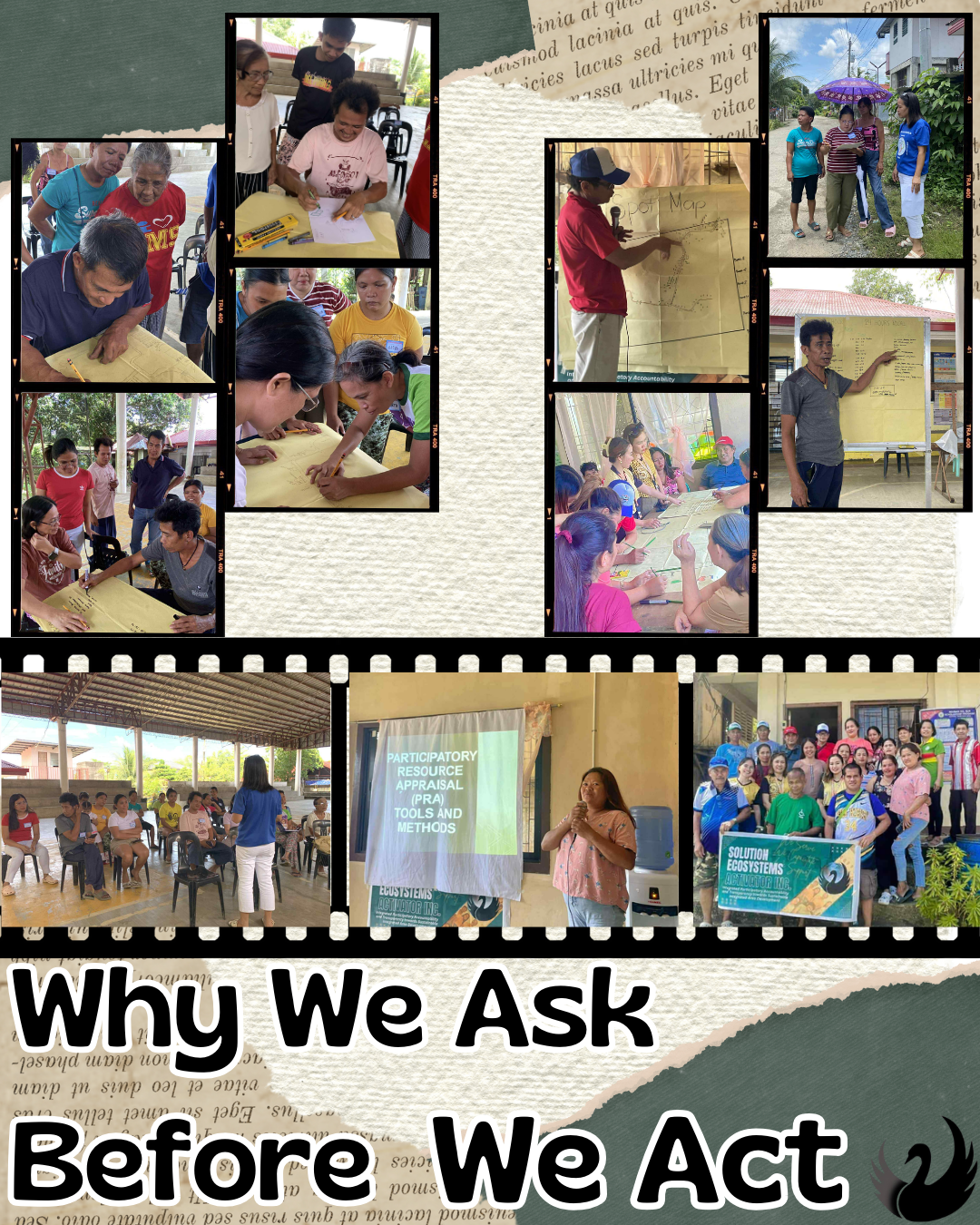If you’ve ever tried cooking for someone without asking what they like, you’ll understand why Participatory Resource Appraisal (PRA) exists. Imagine proudly serving a bowl of steaming pakbet to someone who’s allergic to eggplant—it’s not just awkward, it’s counterproductive. The same goes for community development: you don’t build what people don’t need, and you can’t meet needs you don’t understand.
That’s where PRA comes in—not as another fancy acronym to make meetings sound important, but as a practical, people-powered tool that ensures projects are not just for the community but are built with the community.
What is PRA, Anyway?
Participatory Resource Appraisal is like the community’s GPS—only instead of satellites, it’s powered by the lived experiences, memories, and local wisdom of the people who actually live there.
It’s a method where community members themselves identify resources, assess needs, map out strengths and weaknesses, and set priorities. They’re not just participants—they’re the primary decision-makers.
In a PRA session, you might see:
- Residents drawing maps of their barangay from memory
- Farmers laying out seasonal calendars of planting and harvest cycles
- Youth groups marking safe and unsafe spaces in their community
- Elders recalling historical changes in land use, migration, or traditions
The point? The data doesn’t just come from clipboards and surveys—it comes from voices, stories, and local reality checks that outsiders could never guess on their own.
Why SEA Inc. Chooses PRA for IPAT-SIAD
The IPAT-SIAD program—Integrated Participatory Accountability Transparency towards Sustainable Integrated Area Development—is SEA Inc.’s flagship approach to empowering communities. And if empowerment is the goal, PRA is the vehicle.
Here’s why it’s a perfect match:
- Because Ownership Beats Overtime
When the community is involved from day one, they don’t just “attend” a project—they own it. PRA turns residents from passive recipients into active co-designers. That means less “this is their project” and more “this is OUR project.” - Because Local Knowledge is the Real Google
You can have all the satellite imagery and census data in the world, but it won’t tell you where the soil is secretly sandy, where the floodwater always rises first, or where the wild edible plants grow. PRA taps into the deep, hyper-local knowledge bank that outsiders can’t replicate. - Because Trust is Built, Not Imposed
PRA is not just about gathering information—it’s about building relationships. When SEA Inc. facilitators sit down with community members to listen before proposing solutions, it sends a clear message: “Your insight matters as much as our expertise.” - Because Sustainability Starts at the Roots
Programs designed with PRA are more likely to survive beyond funding cycles because they match what people actually want and are willing to maintain. It’s the difference between planting a tree in good soil and planting one in a parking lot.
Why PRA is Non-Negotiable
In an age where development can be overly technocratic—full of buzzwords, imported models, and “copy-paste” solutions—PRA is refreshingly human. It’s not about parachuting in with ready-made answers; it’s about co-discovering solutions that fit the culture, environment, and aspirations of the people.
If IPAT-SIAD is the roadmap to sustainable development, PRA is the compass that keeps us from getting lost in well-meaning but irrelevant interventions. Without PRA, development risks becoming a one-size-fits-none exercise. With PRA, it becomes a community-led journey where every voice has weight and every insight has value.
In SEA Inc.’s playbook, PRA isn’t just a tool—it’s a philosophy: “Nothing about them, without them.” It’s the reason why IPAT-SIAD doesn’t just touch communities—it transforms them, from the inside out.
Because the truth is simple: when people have a hand in shaping their future, they have a stake in protecting it. And in development work, that’s the kind of investment no grant can buy.





Leave a Reply